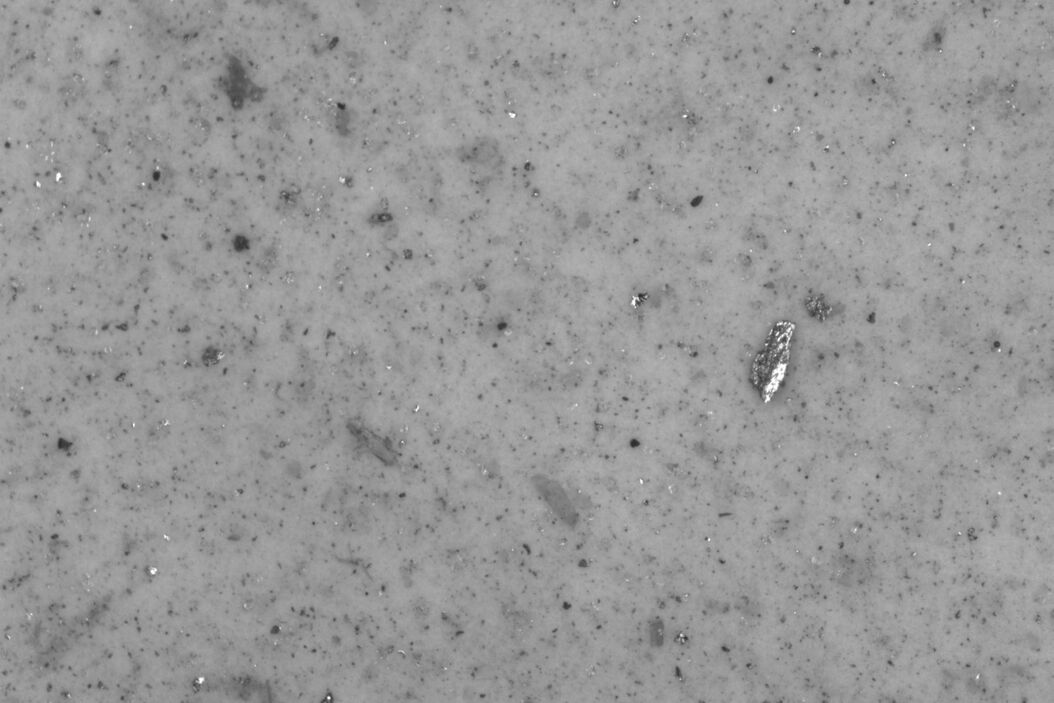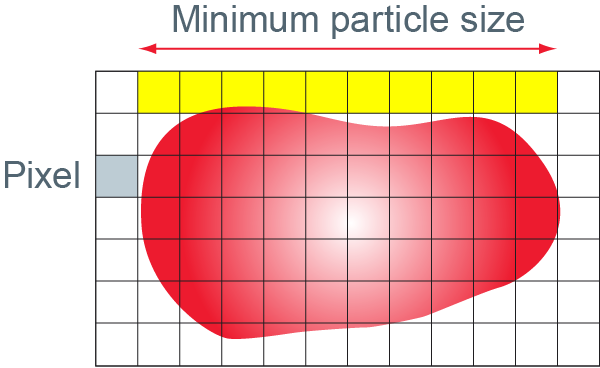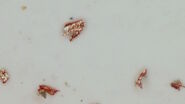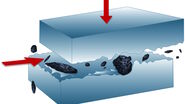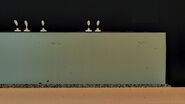Why cleanliness standards for the automotive Industry?
Standardized approaches and methods offer the advantage of helping part and component suppliers and product manufacturers to obtain reproducible, reliable, and comparable cleanliness results. For the automotive and transportation industry, the main standards are ISO 16232 [1] and VDA 19 [2,3]. Suppliers and manufacturers refer to them for the accepted definitions and ranges of values for common parameters, such as particle class in terms of size and composition, threshold values for particle identification, image settings, among others, used for cleanliness analysis. Detection and counting of particles for cleanliness analysis in the automotive industry often conform to the ISO standard and VDA guidelines. This article gives a brief overview of the particle analysis methods mentioned in the ISO 16232 and VDA 19.
ISO 16232 & VDA 19
For the automotive industry, the ISO 16232 standard defines methods which are used to determine the size and number of contaminant particles [1]. These particles are typically extracted from auto parts and components via cleaning with a liquid which is subsequently passed through a membrane filter which collects the particles on the surface. The particles are then analyzed using an optical microscope, either manually or with an automated system, and image analysis techniques [4-6]. The result is a particle size distribution.
The VDA 19 guidelines complement the ISO 16232 standard [2,3]. VDA 19 addresses in more detail: the scope of application and validity; cleanliness inspection; monitoring variations; selection of inspection method; appropriate clean handling of test components; extraction procedure set up; validation; and blank test as well as case studies [2]. Here only VDA 19.1 and inspection of technical cleanliness is mentioned.
Optical microscopy particle analysis
Light, optical systems are typically used for cleanliness validation by performing a fully automated analysis of the filter membrane. The detection, measurement and categorization of the particles strongly depends on the lens (i.e., magnification and resolution), the type of illumination (e.g., polarization, bright or dark field), the threshold values used in the image-processing software, and the characteristics of the particles (size, composition, reflectivity, etc.). Therefore, it is important that the optical systems and analysis parameters be the same when comparing results for the same type of particles.
Standard optical analysis
In order to provide a meaningful comparison, a standard optical analysis is recommended in which image settings and analysis processes are defined before any convention is determined irrespective of the system used.
Detection and measurement of particles
The accuracy of measurement is mainly determined by the magnification and resolution of the microscope lens. A higher magnification enables increased accuracy, but also reduces depth of field. Therefore, when measuring small particles at high magnification, a motorized stage system in the vertical direction may be useful to compensate for the low depth of field and irregular features of the filter surface. The use of high magnification also requires a larger number of images to be analyzed in order to fully inspect the filter. Thus, a compromise has to be found between accuracy of measurement and processing/analysis time.
Moreover, in order to determine sizes and ranges accurately, particles should be evenly distributed on the filter surface without overlapping and this information should be reported in terms of the percent of the surface occupied by the particles.
Polarizers
Crossed polarizers can be used to eliminate reflections from metallic particles in which case the particles will appear dark on a bright background. If polarizers are not used, there is a risk that particles with light and dark areas are divided into several particles when the light regions have a brightness similar to that of the background filter. A distortion of the size and shape of particles in close proximity is also possible when not using polarizers, because adjacent particles may look alike when they are close together appearing as one larger particle.
Particle length and width
Particles’ size and features can be determined with the standard analysis. The particle length, the maximum distance between 2 parallel lines, Feretmax, can correspond to the distance between 2 sensitive elements [5], e.g., electrical leads, which implies that the particle is capable of “connecting” them. The width, or Feretmin, is the smallest distance between 2 parallel lines [5,6] and represents a potential danger when it corresponds to a channel width through which the particle is small enough to pass.
Fibers
Fibers also constitute a common problem during manufacturing, however textile fibers, e.g., from clothing, are less critical than more potentially damaging fiber-like particles, so these types should be distinguished from each other. Typically, a particle with a ratio of elongated length to maximum inner diameter greater than 20 and an inner diameter less than 50 µm is considered a fiber.
Metallic particles
Metallic particles are among the most common contaminants found on components and, because of their mechanical and electrical properties, they are considered critical for many applications. Basic standard optical methods are not reliable for identifying metallic particles due to variations in optical appearance and extended analysis methods may need to be applied for these particles.
However, a first characterization can be done with a non-polarized optical system in order to identify metallic particles which can be recognized due to their shiny appearance (reflections with a histogram intensity value close to that of white). An automated analysis can be performed to determine if a shiny particle is metallic, however results can only be compared if the system’s parameters (type of lens, magnification, other parameter settings, etc.) and the particle characteristics (color, roughness, homogeneity, etc.) are identical. This method can be used if the following two requirements are met:
- The particles are determined to be metallic shiny with the parameter settings already being used, but a prior extended analysis may be necessary to prove it
- Visual confirmation of the automated characterization results is done by a knowledgeable operator
Material and equipment
The following materials and equipment are needed for particle analysis:
- Microscope
- Incident (reflected) light from a homogeneous illumination source without artifacts
- Filter must be tightly held in place on a sample holder and preferably flattened or pressed with a glass lid to ensure the entire filter can be imaged at a specific magnification
- Positioning of the filter needs to be highly accurate, down to the size of the smallest observed particle, and done with a motorized unit
- Lens resolution and the camera sensor’s number of pixels should match so that the 10-pixel criterion can be applied, i.e., where the smallest particle dimension should correspond to at least 10 pixels (refer to figure 1)
Extended particle analysis
Extended analysis methods are used when additional or more detailed information regarding the shape, composition, origin, physical properties (hardness, abrasiveness, etc.) or potential of the particle to cause damage is required. Metallic particles can be identified with more certainty using extended analysis.
Particle height
The depth of field (T) of the microscope lens can be used to estimate the height (H) of a particle. The value of T decreases with the lens numerical aperture (NA), so, therefore, at higher magnification and resolving power. It is calculated with the following equation: T = 550/(NA)2. The value of H can be determined by the vertical difference between the focal planes at the top and bottom of the particle or by the motion of the lens along the Z axis [5,6]. All the measured particle heights should be documented, as these data along with widths and lengths can be used to determined damage potentials.
Composition analysis
The composition of individual particles can be obtained by direct elemental analysis using laser-induced breakdown spectroscopy (LIBS) or energy-dispersive X-ray spectroscopy (EDS/EDX). LIBS involves a laser pulse striking the particle which causes a local plasma to form and light of a specific wavelength to be emitted [7]. A spectral databank is then used to identify the particle elemental composition. EDS is performed using scanning electron microscopy (SEM).
Cleanliness analysis solutions: Conforming to standards and guidelines efficiently
There is a need for solutions which allow users to meet the particle-analysis requirements of the ISO 16232 standard and VDA 19.1 guidelines while spending less time and effort. With such a cleanliness analysis solution users should be able to analyze particles according to the current requirements of ISO 16232 and VDA 19 as well as any future updates.
Knowing the particle composition can be an advantage for reliably determining a particle’s potential to cause damage and identifying the source of contamination [1,2]. With a 2-methods-in-1 materials analysis solution, combining optical microscopy and LIBS [6,7], composition analysis of particles can be efficiently performed. The particles on a filter are visually examined and then immediately chemically analyzed with LIBS [6] without the need to transfer the filter to another instrument or additional sample preparation.
References
- ISO/DIS 16232:2018, Road Vehicles - Cleanliness of components and systems, International Organization for Standardization.
- VDA (German Association of the Automotive Industry), QMC (Quality Management Center), Volume 19, Part 1, Inspection of Technical Cleanliness, Particulate Contamination of Functionally Relevant Automotive Components, 2nd Revised Edition, March 2015.
- VDA (German Association of the Automotive Industry), QMC (Quality Management Center), Volume 19, Part 2, Technical cleanliness in assembly, Environment, Logistics, Personnel and Assembly Equipment, 1st edition 2010.
- Y. Holzapfel, J. DeRose, G. Kreck, M. Rochowicz, Cleanliness Analysis in Relation to Particulate Contamination: Microscopy based measurement systems for automated particle analysis, Science Lab (2014) Leica Microsystems.
- N. Ecke, Basics in Component Cleanliness Analysis, Science Lab (2017) Leica Microsystems.
- J. DeRose, K. Scheffler, D.R. Barbero, Key Factors for Efficient Cleanliness Analysis, Science Lab (2020) Leica Microsystems.
- K. Scheffler, See the Structure with Microscopy - Know the Composition with Laser Spectroscopy: Rapid, Complete Materials Analysis with a 2-Methods-In-1 Solution, Science Lab (2018) Leica Microsystems.
